Columns
Bemused performances and befuddled anxieties
The print media dissected the implications of policy options and helped form public opinion.
CK Lal
In the supplement of Nepali Times, marking its 25 years of publication, Kunda Dixit has titled his Publisher’s Note thus: “Imagine no Internet. No Facebook. No TikTok. No algorithm, no AI”. He spent several years pursuing a futuristic degree in science and technology in the aftermath of the Prague Spring and before the Velvet Revolution in Czechoslovakia. When imagination is proscribed, the mind seeks solace in silently observing absurdities of everyday life and talking to oneself for emotional release.
Kunda experienced the seriousness of political humour in closed polities, first in the Warsaw Pact countries during the Cold War era and later under the authoritarian Panchayat regime back home. Nobody in Nepal can blend irony, paradox, sarcasm and dryness in the English language to say things that need to be said but can’t be said in so many words as well as he does.
Even an illustrious career graph seems to have failed to temper his fondness for frivolous takes on sombre issues. The ‘No Internet’ part in Kunda’s note is perhaps a pun on the dial-up connections of late-1990s and early-aughties when one dialled the prescribed number, waited and prayed for the desired page to load.
Sometime in 1997, my columns from the Independent Weekly were already available on the web. They appear to have gone into ether with the news site of Mercantile Communications that hosted them. The Nepali Times began as an online publication in April 2000. Those were the days when advertisers needed a hardcopy as evidence for auditing purposes. The weekly had to come into print to sustain itself.
Despite encouraging sales and positive feedback for the print version, Kunda’s eyes were focused on the web edition as if he had seen the future. Emphasis was to be placed upon graphics. Bold headlines, clear diagrams, explanatory sketches, suggestive cartoons, rich charts and graphs, colourful maps and photographs that captured unusual moments were prioritised.
Everyday words, short sentences and standalone paragraphs with unmistakable messages were to be crafted to reduce the workload of copyeditors. “The absorption span of a reader on the Internet is 2 minutes or about 400 words,” Kunda would say and add, “and if you are giving them anything more, it better be engrossing”.
Printed word
After the restoration of multiparty democracy in 1990, a group of senior journalists such as Manoranjan Josse, Jan Sharma and Ram Pradhan came together under the leadership of Subarna Bahadur Chhetri to bring out an English language tabloid. Basant Chaudhary liked the idea and agreed to back it with financial resources. The Independent Weekly became the first independently run newspaper from Nepal to carry an interview with King Birendra.
Back in the 1990s, there weren’t too many novices writing in passable English on issues of topical interest. By the mid-1990s, I had become a permanent fixture on its pages. When a bunch of youngsters were hired to give the paper a zesty feel, they proposed that the Fifth Column be either done away with or at least revamped. The publishers told them that the column had become almost as important as the masthead and needed to be given continuity.
The politics was in turmoil with forces that had worked together for the restoration of democracy—Nepali Congress and CPN-UML—at each other’s throats. The Supreme Court had ruled that the ‘understanding’ that Prime Minister Girija Prasad Koirala had reached with New Delhi about Tanakpur was in fact a treaty that needed to be endorsed by the parliament. The ‘Windustry’ was in its growth phase with child labour, environmental concerns, human rights and institutionalisation of democracy attracting considerable foreign funding. The CPN-UML had begun to emerge as the political umbrella of NGO entrepreneurs.
The constitution of 1990 had guaranteed freedom of expression. Nepali language tabloids had a field day ridiculing politicos who had come to the city in chappals and begun being driven around in SUVs overnight. To this day, the-then Prime Minister Sher Bahadur Deuba has not been able to shake off the stink of the Pajero Scandal of 1994 when he had allowed members of parliament a duty waiver for importing luxury vehicles to strengthen his political position.
By the end of the 1990s, FM radio stations had become popular sources of news and views. Talk shows of government-run Nepal Television had begun to offer critical fare. But it was still the print media that set the agenda, dissected the implications of policy options and helped form public opinion. Nepali Times came on the scene just as private radio and television had started to challenge the dominance of print in the mind space of the audience.
Nepali Times created and maintained a niche—unabashedly an upmarket publication appealing to the social elite with a mix of serious news, irreverent views and interesting reviews—that the upper crust liked and expatriates loved. With a touch of Kunda’s characteristic irreverence to the linguistic blend of The Economist’s cool detachment, The New Yorker’s imaginative flair, The Nation’s sharp scrutiny, and the BBC’s direct forthrightness, the editorial team of the Nepali Times developed a distinctive style. Of course I am exaggerating, but only to make the point.
When I left Nepali Times after over a decade of prolific association, the hegemony of print media had already come under serious challenge from a boom in television talk shows, spicy pieces on digital platforms, titbits on Facebook and provocative posts on Twitter, since axed to become X by Elon Musk. The power had shifted from the Fourth Estate of mainstream media and the Fifth Estate of activists to what can be called the “Filth Estate” manufacturing misinformation, disinformation and alternative facts in fake news factories and then purveying ‘mal-information’ through asocial media influencers.
Picture imperfect
The prefix “mal-” means bad, wrongful and ill. The ‘mal-stream media’—I call them so because they chase virality by spreading malicious, malevolent and manipulative content—has been instrumental in creating a post-truth society where voluble individuals are incessantly incensed at everyone other than the self. Like hardbound classics in brushed wood bookshelves of parvenue connoisseurs, the print media will probably survive as coffee table displays. But the halcyon days of general interest newspapers seem to be coming to an end.
My observations are likely to be tinged with the sadness of a print dinosaur, but it’s not just the asocial media, even news portals with a team of journalists of respectable antecedents have fallen prey surprisingly fast to picture-heavy content that lure voyeurs, clickbait headlines that scream for attention and little—if any—discussion about context and consequences. The mal-stream media serves what sells and outrage is bought more readily than objectivity.
Printed words, even when incendiary, generated reflection. It’s not just TikTok, Reels or Shorts, slightly longer YouTube videos too are either mind-numbing or incite a reactionary response. Initially dismissed as ‘Google on steroids’, advancements in Deepfakes and Large Language Models (LLMs) of Generative Artificial Intelligence (GenAI) are likely to make the authenticity of everything suspect. Organised societies run on verifiable trust. Frightened citizenry will rush towards saviours. Uncertainty has always been the only certainty about the future; it has just become a little more alarming.




 10.12°C Kathmandu
10.12°C Kathmandu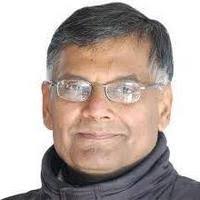
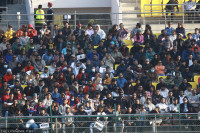
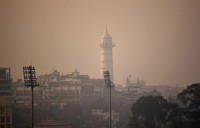





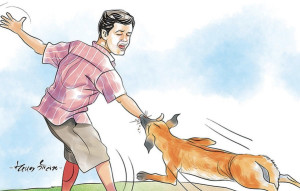


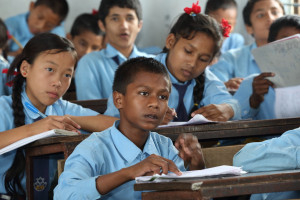


%20(1).jpg&w=300&height=200)

